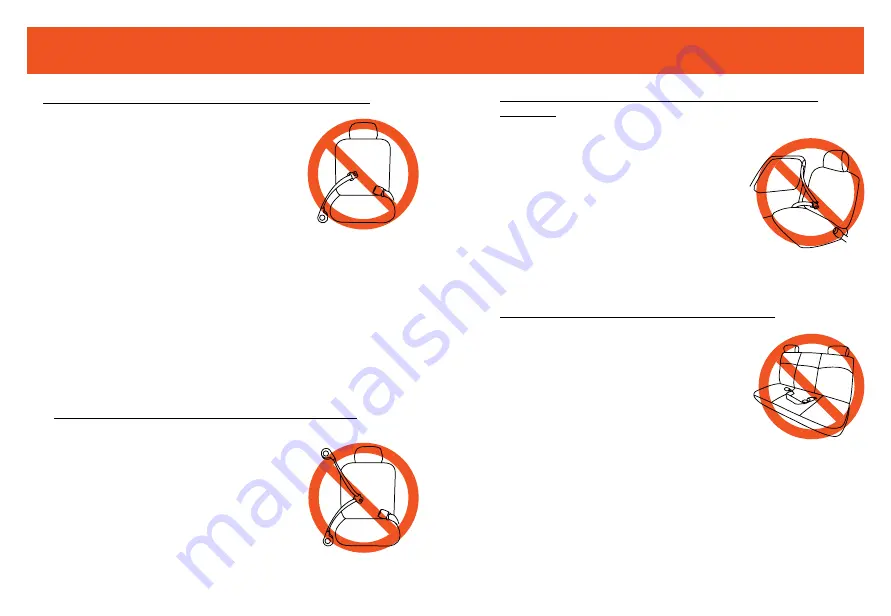
21
22
Lap Belt With Emergency Locking Retractor (ELR):
DO NOT use a vehicle lap belt that stays
loose or does not stay tightly adjusted
after installed and locks only in a crash
or sudden stop. These lap belts utilize
an Emergency Locking Retractor and
are often found in combination with
motorized shoulder belts. Because
these belts will allow the Booster Seat to
move about on the vehicle seat, the
chance of the Booster Seat being out of
the proper position in a crash is very high.
Accordingly,
DO NOT use the Booster Seat
with this type of Vehicle Seat Belt system.
Please see your vehicle’s dealer or
owner’s manual for information on
converting this vehicle seat belt system
to one that is acceptable for use with
a Booster Seat.
Combination Lap/Shoulder Belt With Retractor:
DO NOT use a vehicle lap/shoulder
belt system if the lap belt and shoulder
belt each have retractors at one end.
This type of vehicle seat belt system
will
NOT adequately restrain the
Booster Seat.
8.0
Vehicle Seat Belts
Passive Restraint - Lap or Shoulder Belt Mounted
on Door:
DO NOT use a vehicle seat belt that is
connected to the vehicle door in any way.
These types of seat belts are designed
to automatically surround the occupant
when the door is closed. This type of
vehicle seat belt will NOT adequately
restrain the Booster Seat.
Lap Belts Located Forward of Seat Crease:
DO NOT use a vehicle seat belt that is
anchored on the vehicle seat more than
2 inches forward of the crease between
the seat bottom and the seat back. This
type of vehicle seat belt anchors the
Booster Seat too far forward and the
Booster Seat will NOT be safely restrained
in the vehicle.
8.0
Vehicle Seat Belts


































